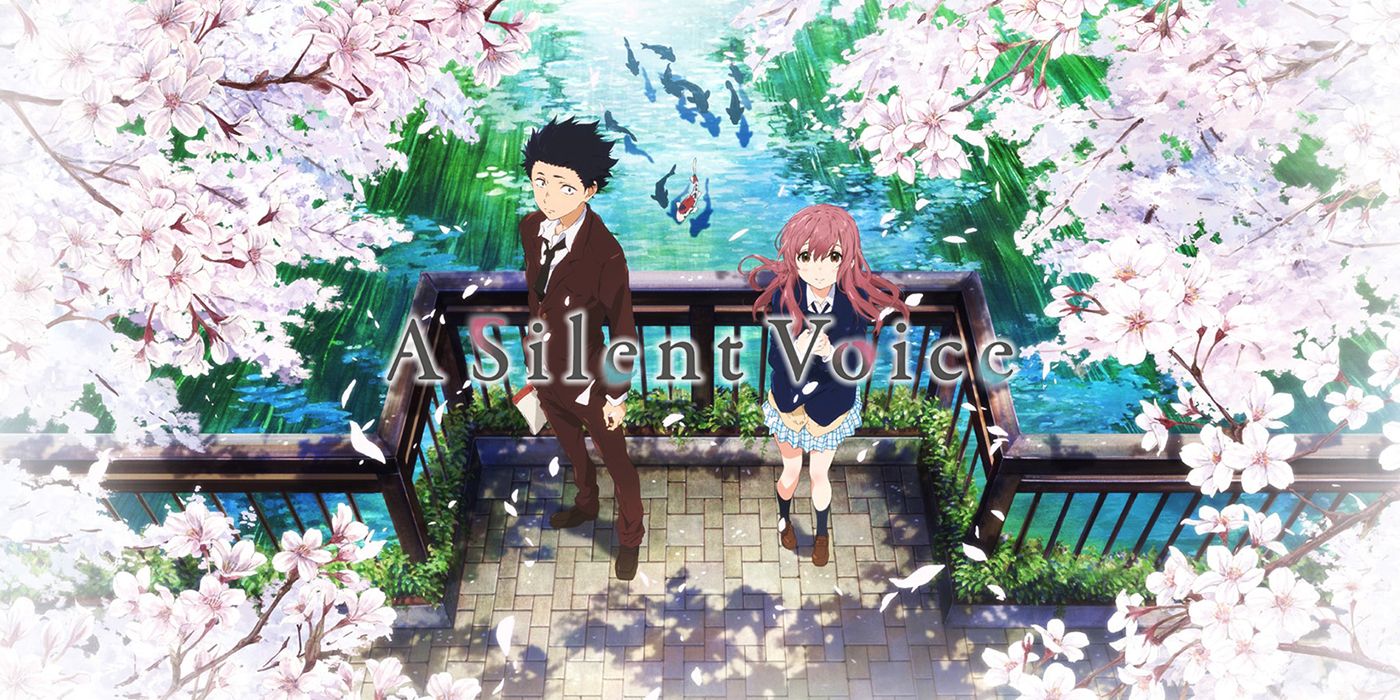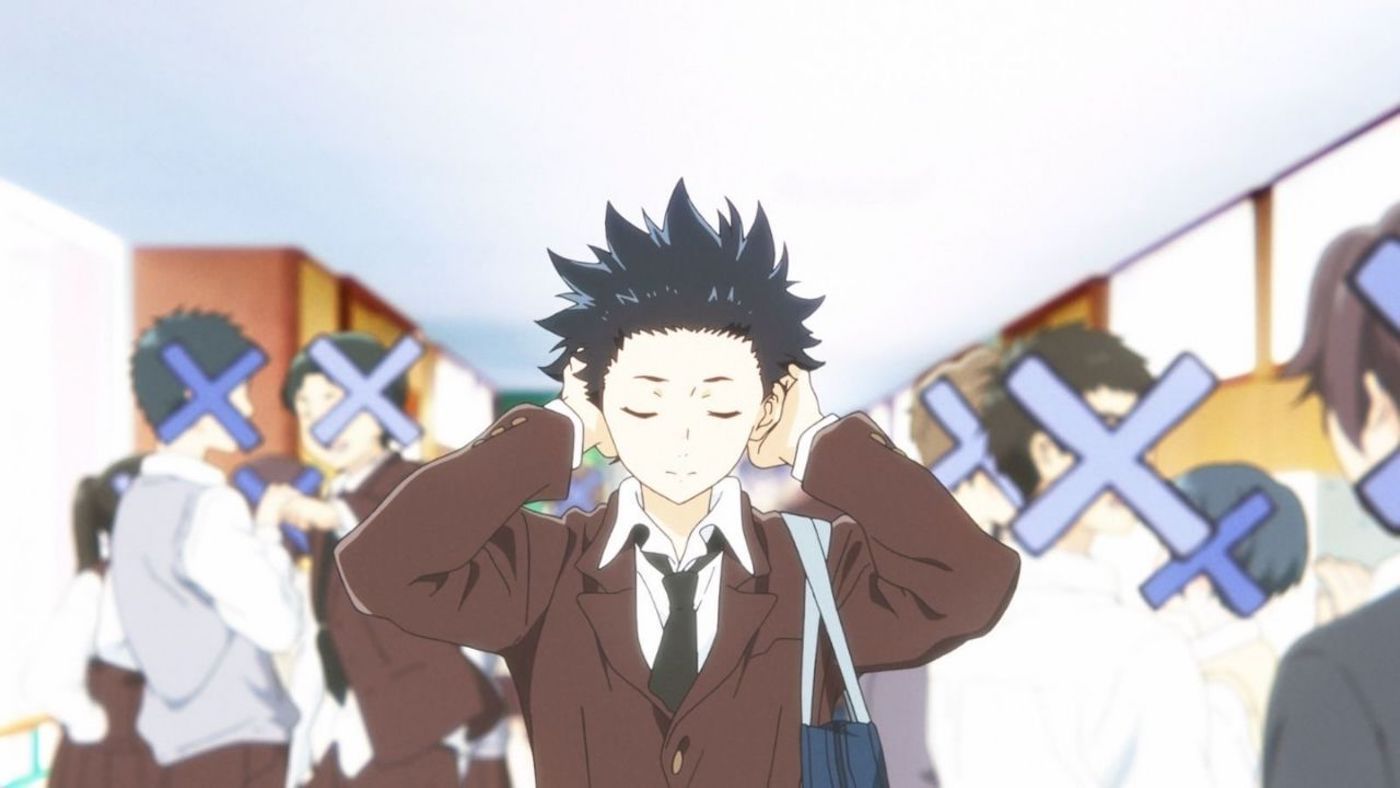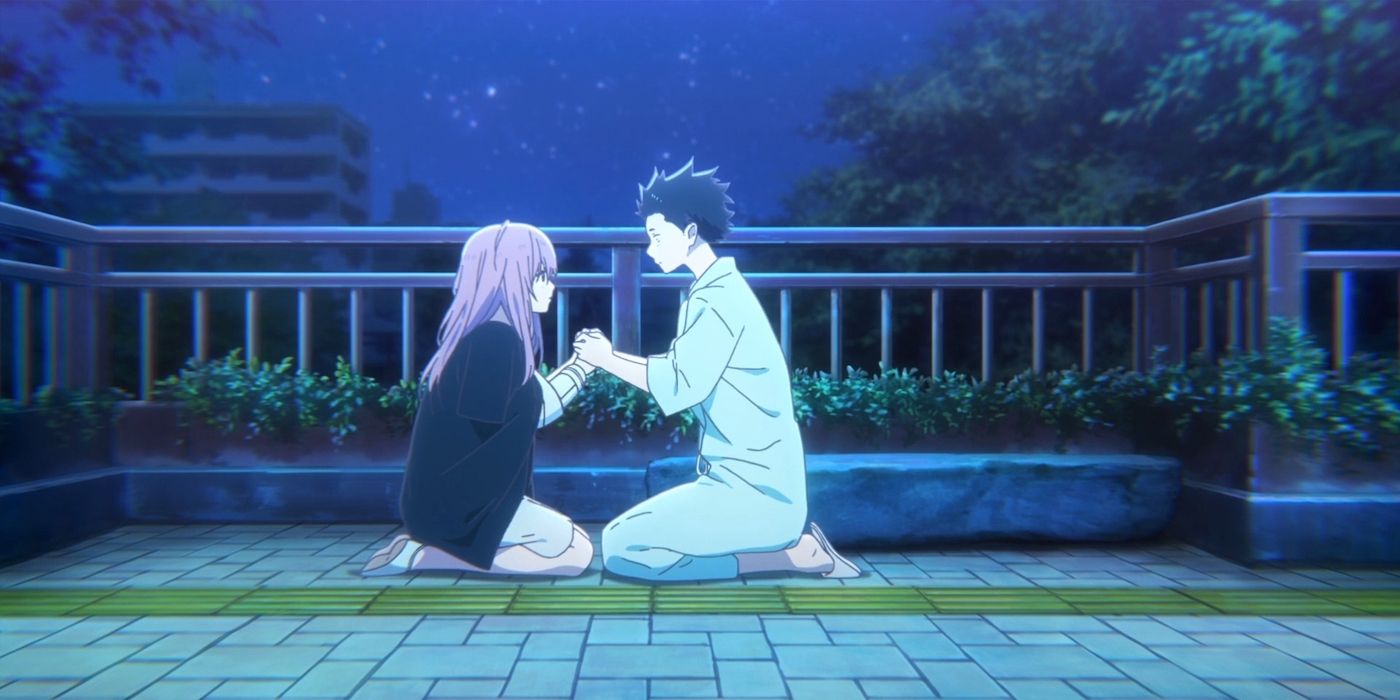There is no animation studio quite like Kyoto Animation, and there is no animated feature film quite like its 2017 release, A Silent Voice. Directed by Naoko Yamada (K-On!), the film was a success, especially because of its delicate but bold execution of heavy topics, such as bullying, anxiety, and suicide. But A Silent Voice also enchanted its audience through beautiful and effective animation. One storytelling technique, in particular, illustrates the protagonist’s extreme social anxiety in a unique but accurate way: Large X's over people's faces to represent Shoya's social anxiety.
As a six-grader, Shoya Ishida (Miyu Irino in the original Japanese, and Robbie Daymond in the English dub) ruthlessly bullies the new deaf student, Shoko Nishimiya (Saori Hayami in the original Japanese, and Lexi Cowden in the English dub), making her time in grade school miserable. Spurred on by the laughs he gets from the other kids in his class, Shoya’s antics get more hurtful until he gets in trouble. What was once a nightmare for Shoko becomes a nightmare for Shoya, as the rest of the class turn on him, and he, in turn, becomes the victim of bullying. The rest of grade school for Shoya is riddled with the consequences of his actions, from his mother having to pay for the hearing aids that he broke, to being left completely without allies when Shoko transfers to another school. Starting in middle school and continuing into high school, Shoya’s regret becomes a defining part of his character: he finally understands that what he did was despicable, and he continues to punish himself.
This sense of shame is so powerful that Shoya is consumed by it. He develops extreme social anxiety and imagines that everyone is talking about him behind his back; as a result, he is unable to look anyone in the eye. This manifestation of Shoya’s regret and guilt is shown to the audience via first-person POV shots, a technique that matches well with the animated/anime medium, due to its highly expressive and over-exaggerated style.
The illustration of Shoya’s shame and anxiety comes in a variety of forms. There are many instances where other characters’ heads are out of frame or covered by other objects, and Shoya’s POV shots often focus, instead, on other characters’ shoes. When he is forced to glance at someone else’s face, however, his inability to look them in the eye is illustrated by a sketched X hovering in front of their face. When surrounded by a crowd of people, Shoya sees a sea of X’s, and the noise from everyone around him is so overwhelming that he covers his ears or tunes them out. He is so afraid that others will judge him for his past actions that he closes any path toward connecting with them and pushes everyone away.
A few people escape the X treatment at the beginning of the story, the most notable being Shoko herself. When Shoya rethinks his plan to commit suicide, he decides to make things right with Shoko, and befriends her. Fortunately, Shoko is an extremely forgiving person, and though Shoya looks down or away from her during their first conversation, he is quickly able to look her in the eye, because she is the person who deserves his apology the most. Because of this, Shoko never has the X over her face. In fact, through his friendship with Shoko, Shoya’s social circle begins to widen, and more friends, new and old, are added to the cast. When Shoya helps a classmate, Tomohiro (Kensho Ono in the original Japanese, and Graham Halstead in the English dub), deal with a bully, he is surprised to find that Tomohiro returns the favor (and his bike). Much to Shoya’s shock, the X that was previously covering Tomohiro’s face peels off and floats to the ground.
As Shoya and Tomohiro’s friendship speed-runs into best friend territory, various other characters enter the fray and more X’s begin to fall away. Even Naoka (Yūki Kaneko in the original Japanese, and Gia Grace in the English dub), who hasn’t changed her prickly attitude since sixth grade, reveals her face during a group outing at the fair. However, just as Shoya is beginning to allow himself to have fun, Naoka manipulates Shoya into running into one of his ex-friends from grade school, which snaps Shoya back into his isolating mindset. Immediately, the X reappears on Naoka’s face, signifying Shoya’s attempts to distance himself from her. This highlights a very important aspect of social anxiety that is easy to overlook. When someone who is suffering from extreme social anxiety has a breakthrough of sorts or even a single good day, it isn’t uncommon for them to fall back into an anxious mindset if even one thing goes wrong—or even if nothing goes wrong at all. The battle against social anxiety is an ongoing and difficult fight, one that isn’t easily overcome with one, or even many, breakthroughs.
But despite its heavy themes and tear-jerking moments, A Silent Voice does leave its audience with an uplifting message. After a falling-out with his group of friends and a crisis involving Shoko, Shoya decides to attend his high school festival with Shoko and apologize to their friends for his self-isolating and hurtful behavior. With the peace in the group newly reinstated, Shoya feels safe enough in his own skin and around those who genuinely care about him and have forgiven him. In response, the entire crowd around him lose their X’s. Shoya, now able to face everyone without regret, is so overwhelmed by this new freedom that he can’t stop himself from breaking down in tears.
Though Shoya will undoubtedly have more struggles in the years to come, he has made a significant step forward. And even though his anxiety will still be somewhat present, Shoya has grown past the crippling layer of self-isolation signified by the X’s.
A Silent Voice is full to the brim with tear-jerking moments, but this one is arguably one of the strongest. About 7% of the world’s population struggle with some form of anxiety: that’s millions of people worldwide feeling similar to how Shoya does. Through the use of this unique animation tool, A Silent Voice not only represents this struggle in a way that both those with social anxiety and those without can understand, but it also presents the pitfalls to steer clear of and a potential way out - as well as a light at the end of the tunnel.



